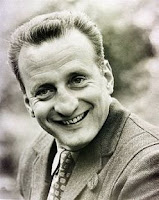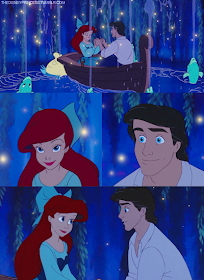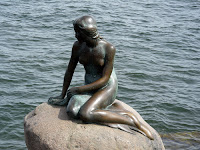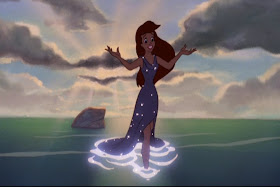Okay, pop quiz everybody: when you hear the phrase “Disney Renaissance,” what are the films that first come to mind? If you’re anything like me, you will answer The Little Mermaid, Beauty and the Beast, Aladdin, and The Lion King. And why not? All four of them were monstrously successful and critically acclaimed films that were released between the period of 1989 to 1994. In fact, these films are regarded by most as the pinnacle of the art of animation. It truly does not get any better than these four films.
What most people tend to forget is that there were actually five films released during the period of 1989 to 1994. Know what it is? I’ll give you a hint: the fifth one ain’t Pocahontas. What’s that? Did I hear someone just say The Rescuers Down Under? Gold star for you, you know your stuff.
That’s right, The Rescuers Down Under is the forgotten film of the Disney Renaissance. It didn’t perform that well in the box office despite mostly positive reviews from critics, which could explain its tendency to be left out of discussions of the Disney Renaissance films. I remember watching this film quite a bit as a kid on VHS; I was actually more familiar with this film than I was with the first Rescuers movie. I enjoyed the film then, and I do enjoy it now. Except now that I’m older, I can identify some issues within the film that more likely than not led to its underwhelming monetary intake.
First, let’s take a gander at the title: “The” and “Rescuers” and “Down” and “Under.” Those first two words immediately cause its audience to hearken back thirteen years prior to this film’s release, when The Rescuers was unleashed on the world. Our expectations are immediately set: the further adventures of the ever so dynamic team up of Bernard and Miss Bianca when they are called on another mission to help a young kid who is in trouble. Through some skilled detective work, Bernard and Bianca deduce who kidnapped the child, why they were kidnapped, and where they were taken. Bianca is always brave, determined, while still being charming and sophisticated while Bernard fumbles over his words, doubts their abilities, and at times let’s his superstitions get the better of him. Through an elaborate plan involving some aid from the locals, Bernard and Bianca are able to rescue the kid while foiling the bad guy.
Though some of these elements are present in The Rescuers Down Under, a lot of them – in particularly the deductive mystery aspect, which is what I found so charming in the original – are not present at all. Come to think of it, Bernard and Bianca don’t have that much screen time at all in this film. Bernard and Bianca don’t make an appearance in this film until eighteen minutes have already passed. Compare that to the original Rescuers movie where Bernard and Bianca appeared on screen together just seven minutes into the film.
The audience spends the first eighteen minutes of film time getting to know Cody and discovering his plight. Because of this, the mystery aspect of the first Rescuers film is promptly dropped since the audience knows exactly that it was Cody who has been kidnapped, that it was McLeach who took him, and what McLeach’s reasons were for wanting Cody. Even after Bianca and Bernard are assigned the case, the audience’s time with them is rather sparse. There are a lot more subplots in this film than there were in the first film.
There are a couple of scenes devoted to Cody’s escape attempts with the animals McLeach captured. There’s a prolonged scene with McLeach revealing his a great deal about his current mental state. There are several comedic scenes with Wilbur. That all adds up to a lot more time spent with characters that aren’t Bernard and Miss Bianca.
I can’t help but feel that might have contributed to the film’s lack of profits; it grossed only $47 million, so while it wasn’t a total flop, it was the least profitable film of the Disney Renaissance. With the words “The Rescuers” in the title, I imagine many a person was expecting a film very much in the same vein as the first Rescuers film. As much as I enjoy The Rescuers Down Under, it is not a Rescuers movie when compared to the original. Why must I draw comparisons to the original at all? Because The Rescuers Down Under is an incredibly important landmark film for Disney Animation: their first true sequel.
I can’t help but feel that might have contributed to the film’s lack of profits; it grossed only $47 million, so while it wasn’t a total flop, it was the least profitable film of the Disney Renaissance. With the words “The Rescuers” in the title, I imagine many a person was expecting a film very much in the same vein as the first Rescuers film. As much as I enjoy The Rescuers Down Under, it is not a Rescuers movie when compared to the original. Why must I draw comparisons to the original at all? Because The Rescuers Down Under is an incredibly important landmark film for Disney Animation: their first true sequel.
Of the fifty films Disney Animation has created for their canon over the past seventy plus years, only two have the distinction of being sequels: Fantasia 2000 and The Rescuers Down Under. Now before anyone brings up some films that I’d rather avoid talking about, when I say true sequels, I mean sequels that were released in theaters under the Disney Animation banner. That means that these are the only two film sequels to be considered canon. That means comparisons between the two are practically required.
I know that there have been plenty of sequels that were departures from their respective original films, and by and large are considered to be improvements on what came before, like The Empire Strikes Back, X2, and The Dark Knight. And there were elements of The Rescuers Down Under that were incredibly successful, but I admit that I did miss Bernard and Bianca. I feel as though the story team was looking for an excuse to set an animated film in Australia and they chose The Rescuers franchise as their chosen avenue. Which is no surprise, considering that the studio had been hankering to do a Rescuers follow-up something fierce. After all, Oliver & Company had originally been conceived as a Rescuers sequel (just as the original Rescuers had been planned at one point to be a semi-sequel to One Hundred and One Dalmatians), so the studio had wanted to expand on the story universe laid down in The Rescuers at least by 1988.
Why was Disney so sequel happy when it came to The Rescuers? Well, if you think about all the films that are a part of the Disney animated canon, most of them ended pretty resolutely; there’s just no arguing with the phrase “happily ever after.” But The Rescuers was unique in that it really did end things on an open ended note: Bernard and Bianca flying away on Orville for yet another adventure with the phrase “tomorrow is another day” ringing in the audience’s ears as they parted ways with the two mice. The movie was a success and the story did call for continuing their adventures, so why not make a sequel? It just didn’t get greenlit for production until 1988, eleven years after the first film’s release.
Coincidentally, 1988 also happened to be the same year that Crocodile Dundee II (http://www.imdb.com/title/tt0092493/) came out in America. Why is that significant? Well, it’s an indicator that in the late eighties, American moviegoers were fascinated by the culture surrounding that not-so-small island in the south Pacific. So in the year that a once proposed Rescuers sequel was released on the American populace, an official sequel to the original film was put into production with the untamed Australian outback as its chosen setting. Coincidence? I don’t believe in them.
Though the “Down Under” aspect of this film is the main thing that bothers me as an adult watching it. In 2009, I was blessed with the opportunity to live in Australia (in Perth, in the Western Australia territory) for almost a year. There’s a special section of my heart for the country, its history, its culture, and most of all, the amazing people who call the merry old Land of Oz home. So while I’m not an authority on all things Australian, I can usually point what is true Ozzie and what is the impression Americans have of Australians. And I’m sorry to say that The Rescuers Down Under is about as authentically Australian as Outback Steakhouse.
 |
| That's a Kookaburra, Australia's favorite bird |
Don’t believe me? Then do what I did and check the IMDB page for each character that spoke with what is supposedly an Australian accent (http://www.imdb.com/title/tt0100477/). I was quite dismayed to learn that every single “Australian” voice was in fact British! Cody’s kangaroo friend at the beginning, Faloo? British. In fact, her voice actress (Carla Meyer) also doubled as Cody’s mom. Actually, I knew she was British before I even checked her profile because of some pieces of dialogue in the film: she calls Cody a “lil’” friend and she says “right-o.” Ozzies don’t say “lil’,” they say, “little.” Also, I’ve heard “right-y-o” but not “right-o.” Both are big tip-offs that the voice actress in question was a true Brit.
The kangaroo held prisoner by McLeach, Red? Voiced by British actor, Peter Firth. The cynical koala, Krebbs? Actually, he was voiced by Douglas Seale, who would feature prominently in a later Disney film, Aladdin as the voice of the Sultan. The Doctor who treats Wilbur? Voice provided by Bernard Fox. All of these actors are very British.
Look, I know that Disney has never been nor will ever be able to be completely authentic to their settings and I can overlook the casting of British actors (no offense to the Brits, they’re amazing and they know it), but I feel as if this movie were being made now, there would have been at least more than one Australian actor making an appearance. Look at Lilo & Stitch; Tia Carrere and Jason Scott Lee both provided voices in that film, and had both grown up in Hawaii. Their experience greatly influenced the film and added a layer of authenticity. Though I hesitate to bring up a Pixar film, Finding Nemo managed to be set in and around Australia, and was able to masterfully use actors that were from all over the world, but for the characters who were supposed to be from Australia, they cast real Australians.
But I can overlook a lot of that for just being a product of its time, but there’s one aspect of The Rescuers Down Under that I can’t forgive: Cody. He is supposed to be a native to Australia, there’s no question about it. He says, “mate,” he says “no worries,” there is no question that the character of Cody is supposed to be Australian. And yet he speaks with an American accent. I’m not sure if the film makers were scared that audience wouldn’t be able to relate to the central character if he was not American or something, but I will say that even as a kid I found it kind of odd. If there was any character who should have been voiced by Australian kid, it should have been this one. Funny enough, the kid who provided Cody’s voice, Adam Ryen, wasn’t even American; he was Norwegian, and even got the opportunity to dub in Cody’s voice for the Norwegian release of the film. Go figure.
The one Australian that did appear in this film was soap opera actor, Tristan Rogers, who voiced Jake the kangaroo rat. Not too surprisingly, Jake was one of the better aspects of the film. Granted, he embodied a fair few Australian stereotypes, from his outfit to acting as the rugged and charming rival for Miss Bianca’s affections, but I just loved seeing the animation of him hopping down the runway so I can excuse him for that. Rogers delivered a solid performance even though his motivation was fairly simple: be Australian.
That isn’t to say that I dislike the film, because I like it a lot. I just had to get the parts that bug me about this film off of my chest first. Now we can focus on the good aspects of The Rescuers Down Under. And there is plenty of good to be had, trust me.
That opening flight scene with Cody and Marahute is one of the most breathtaking scenes in the history of Disney animation and is most definitely the showpiece of The Rescuers Down Under. It’s a magnificent scene to watch, and was influenced heavily by the works of Hayao Miyazaki. Overall, I love the animation for Marahute. She’s gorgeous to watch as she flies, and her behavior is accurately bird like, but at the same time, she’s incredibly expressive and sympathetic without having to resort to the Disney standby of having to animal speak. Just watch her sadly bow her head at the thought of her dead mate, and try not to feel for her. She is most definitely one of the film’s strongest characters. Guess who animated her: surprise, surprise, Glen Keane. Can the man do no wrong?

I didn’t know this before I looked it up, but apparently Marahute is real. I mean her species of eagle is a real one. They are called the Wedge-tailed eagle (a.k.a. the Eaglehawk) and they are the largest bird of prey in Australia (http://en.wikipedia.org/wiki/Wedge-tailed_eagle). Though they are really big birds, I think Marahute was a rare ginormous variety because their real life wingspan is only about seven feet. Sadly, they are an endangered species but only the ones found in Tasmania are in trouble. And yes, that variety is indeed the largest of the Wedge-tailed eagles.
So the whole story of poachers wanting this bird is not so far fetched. I mentioned back when I reviewed Fox and the Hound that it is rare when Disney films have an obvious agenda. The Rescuers Down Under does indeed have an agenda, one that is a reflection of the conservation awareness that began to become more prominent than ever in America in 1990’s. Come on, what kid in the nineties didn’t watch Captain Planet? Conservation is a cause that Disney has been a part of for several years now; The Land pavilion in Epcot is devoted to environmental awareness on several subjects, and there are quite a few attractions over in Disney’s Animal Kingdom that shed light on issues facing our planet’s well being. But The Rescuers Down Under was the first Disney animated film to display Disney’s stance on the subject.
The poacher in this film, Percival C. McLeach, is the typical despicable, heartless, ignorant face that comes to mind when one thinks of a person who willingly hunts down and kills rare and special animals for profit. He was the kind of villain that the audience had no problem hating, but at the same time he was entertaining while being a threatening menace. He also proved to be the only character to have a life beyond the film (ironically since he takes a header down a waterfall): remember that poster I talked about in The Black Cauldron? McLeach is in it too, making it an amazing piece of merchandise for celebrating the lesser-known Disney Villains. And Patton himself, George C. Scott, voiced him. In fact the other day when I sat down to watch this film, my mom sat down with me and I mentioned to her that George C. Scott did a voice in this film. Without even needing to point out his character, the first time McLeach appeared on screen, my mom smiled and said, “That’s George C. Scott. They gave him his nose.” After looking up a picture of George C. Scott and comparing the two… they totally gave McLeach his nose.
McLeach was an effective villain. His actions were absolutely abhorrent: he was going to torture and murder a little boy just so that he can make some money for ending a rare species of bird. That’s pretty cold, but at the same time he has some really funny one-liners. The scene that revealed the most about his character was the scene where he is talking to himself about how to get Cody to tell him where Marahute is. It’s a little reminiscent of DeNiro talking to himself in Taxi Driver, especially when he’s mocking the radio broadcast that declares Cody dead.
Of course, that scene is also really funny for the gag of Joanna tricking McLeach time and again to eat his eggs. In fact, as scary as Joanna might have seemed to Cody and the rest of the animals, she was actually more comedic for the audience to watch. The bit where she sets off to eat the eagle eggs should have been horrifying for the audience to watch, but instead it’s one of the funniest moments of the film as she attempts to eat rocks. Those great sounds she makes are courtesy of legendary voice actor, Frank Welker by the way.
Joanna isn’t the sole source of comic relief in the film though. I find the bits with Frank the somewhat psychotic lizard amusing, but for me the biggest laughs in the film were due to the new Albatross air pilot, Wilbur. One of the reasons that I think The Rescuers Down Under is so special is because it was the only time John Candy provided a voice for a Disney film. The studio had wanted to work with him again after The Rescuers Down Under, as he was one of the comedians they had in mind for voicing the Genie in Aladdin before the role went to Robin Williams, and they had cast him as a talking turkey character in Pocahontas. Unfortunately, he passed away early in that film’s production and they made the decision to not have the secondary animals speak, so all of the work he did remained unused.

 The scenes that made me laugh the most as a kid involved Wilbur, and I have to say that hasn’t changed. The part where he freaks out in the hospital because of the shot they are planning on giving him was hilarious. Though I have to say that if a nurse started loading up a shot for me in a double barrel shotgun, I would have freaked out too. His interactions with Bernard and Bianca in New York were also really funny; his shtick was pure John Candy and I loved it.
The scenes that made me laugh the most as a kid involved Wilbur, and I have to say that hasn’t changed. The part where he freaks out in the hospital because of the shot they are planning on giving him was hilarious. Though I have to say that if a nurse started loading up a shot for me in a double barrel shotgun, I would have freaked out too. His interactions with Bernard and Bianca in New York were also really funny; his shtick was pure John Candy and I loved it.And finally we come to those two little mice. They are the ones who put “The Rescuers” in The Rescuers Down Under and if I had one complaint about them, it’s that we didn’t see nearly enough of them. Bob Newhart and Eva Gabor didn’t miss a step when they reprised these roles thirteen years after the fact. Their voices hadn’t aged a day and they still brought to the table what the audience liked about Bernard and Miss Bianca the first time around.
Eva Gabor was still as charming, sophisticated, and sexy as ever as the lovely mouse. Miss Bianca spends the film determined to save Cody, unknowingly being flirted with by Jake, and oblivious to Bernard’s attempts to finally put a ring on it. What’s great about her is that she is Bernard’s biggest fan and knows that he will pull through when all seems hopeless. As for her best outfit in the film, easily the Casablanca era Ingrid Bergman inspired number she wears in that fancy restaurant.

 The restaurant date scene is one of my favorite scenes in the film. What’s so charming about The Rescuers films is how they show how mice live in such a huge world. The exclusive restaurant sitting on top of a chandelier was inspired. I also loved the scene where the call for help was relayed from Australia to the other side of the world. Those mice sure do get creative, huh?
The restaurant date scene is one of my favorite scenes in the film. What’s so charming about The Rescuers films is how they show how mice live in such a huge world. The exclusive restaurant sitting on top of a chandelier was inspired. I also loved the scene where the call for help was relayed from Australia to the other side of the world. Those mice sure do get creative, huh?Miss Bianca said it herself when she declared Bernard the hero of the day. Newhart has such an identifiable voice that’s just perfect for the everyman quality Bernard evokes. He’s still as nervous and bumbling as ever, but he definitely steps up when the occasion calls for it, when he manages to save the eggs from Joanna, when he has to save Cody and when he finally takes Miss Bianca off the market. One of my favorite small moments is the part where he says, “Oh my Gosh – I hope I know what I’m doing” just before he kicks Joanna in the nose. Though I do have to question where exactly he summoned up all that upper body strength to pull Cody up to the surface of the river.
Once again, a Rescuers film ends kind of openly. Bernard and Bianca, newly engaged, flying off into the night, God only knowing what their next mission would entail. Not so surprisingly, this was not planned to be the final Rescuers movie. There were plans for a future sequel, and possibly more beyond that. Sadly though, all plans for any further Rescuers films were scrapped with the passing of Eva Gabor in 1996. I have to admit, it would have been interesting to see what else they could have done with the story.
Besides being the first true Disney sequel, this film is significant for another reason. This was the first Disney film to be completely processed digitally. You’ve all heard of the CAPS system that was the standard of the Disney Renaissance, right? Though there were scenes in The Little Mermaid that employed it, this was the first film that used it all the way through. Though there are some bits with the computer animation that don’t seem as seamlessly blended with the hand drawn animation by today’s standards, overall it made for a very pretty film that did show off a fraction of the beauty of Australia. Oh well. Cheers mate.
















































